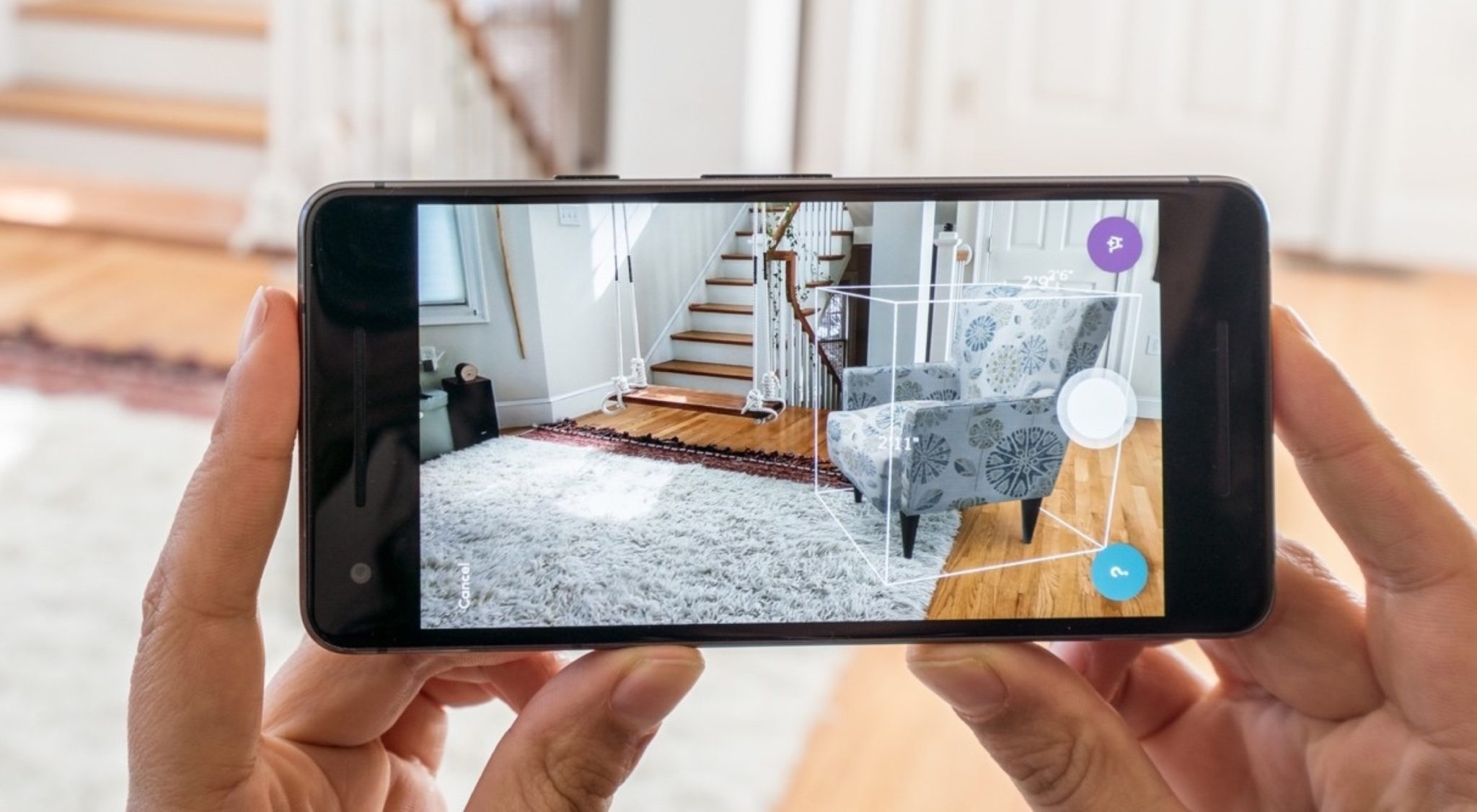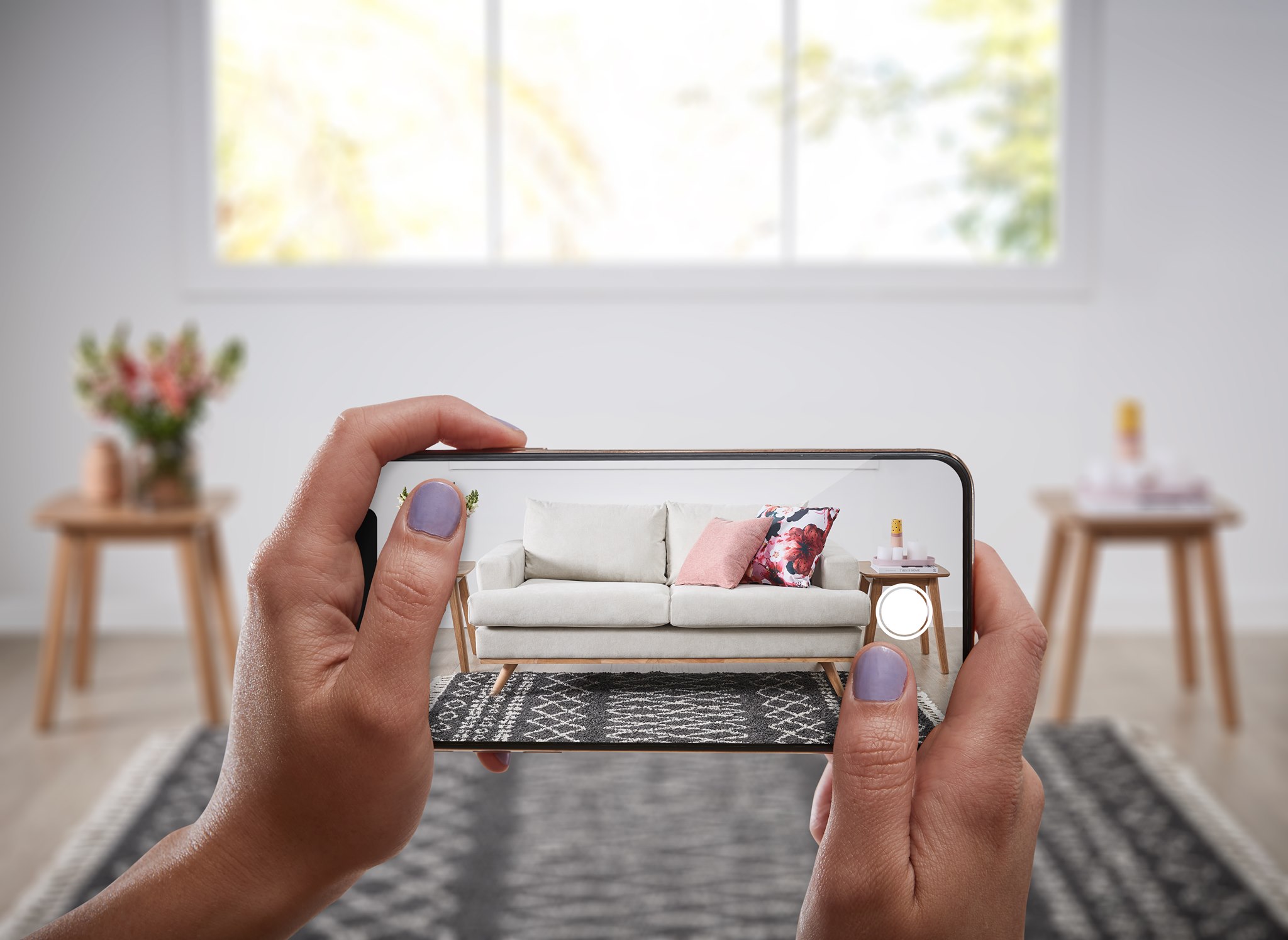Key takeaways:
- 3D and augmented reality (AR) is unlocking new opportunities for retailers to serenade, engage and convert shoppers
- A close look at the drivers and benefits of augmented reality in retail
- Examples of retail brands ace-ing the augmented reality game

There’s a new species of buyer in town, one which prefers to spend a good chunk of time online before visiting the store. What if businesses could seal the deal there and then, on their customer’s digital device? No more restless nail-biting wondering if they will drop by the shop. No more dependence on the skills of the store team to sway the mood. No more danger of running out of stock. 3D and augmented reality (AR) in retail is turning that utopia into reality for businesses - one memorably immersive experience at a time. And both buyer and seller are in love with what’s unfolding.
Retailers are adventurous by nature, but have long been restricted to traditional marketing mediums and outreach channels like print (newspaper and magazines), in-store ambience and outdoor advertising. 3D and AR allows for an easy and interactive way of immersing customers in the product universe, bridging the digital-physical divide.
“Augmented reality is changing the way we shop… and transforming how businesses tell their stories and sell their products.” - Jeremi Gorman, Snap’s Chief Business Officer.
How exactly is 3D and AR changing retail’s status quo?
The technology offers retail brands and customer experience custodians an innovative, personalized and memorable way of engaging with prospects and building enriching relationships with patrons. 3D and AR represents an unprecedented opportunity for retail businesses to seize the initiative at key steps of the buyer journey – be it creative marketing messaging, highly dynamic demos and presentations, or mining user data and feedback. For now, 3D and AR is by far the best option a retailer has to cut through the avalanche of nearly 10,000 ads which an average customer is exposed to every day, or prevent users from tuning out during the commercial break.
Snap (formerly Snapchat) has found that it is shopping that is the number one reason consumers use augmented reality. The company also reports that across industries, AR features like virtual trials and try-ons were driving prospects to purchase. The Harvard Business Review suggests that incorporating 3D and AR in retail can boost purchase probability by 19.8%. In addition, research co-authored by the Publicis Media found that 80% of shoppers would be more confident in buying if there was an AR component present somewhere in the journey.
On average, AR users spend nearly $1,000 more than non-AR users. 70% of consumers trust 3D and AR tech to deliver them benefits that are unique, and 65% of visitors are more likely to place an order after engaging with a product in augmented reality. Furthermore, 93% of Snapchatters – which is popular with the emerging Gen Z market – are keen to use augmented reality for their shopping experiences.
When beauty brand Ulta got onboard Snap’s AR enhanced e-commerce platform, it reported $6 million in incremental purchases, and over 30 million product try-ons within the first 2 weeks. When Gunners Kennels let their customers digitally visualize how their in-store products will actually look like at home, the brand experienced a 40% hike in order conversion rate. Cosmetics brand MAC had similar results; 1.3 million try-ons at a cost of 0.31 cents per product trial, with a ninefold rise in purchase intent and a seventeen fold spike in actual purchases. No wonder Snap has officially upgraded its shopping experience with 3D and AR.
Given these figures, it is no surprise then that overall market for augmented reality, virtual reality (VR), and mixed reality (MR) is expected to rise to USD 250bn+ by 2028, with revenue for AR alone slated to hit $340bn.
“We’re entering into this phase where we get to experience these products, on our face, in our home, in our environment, on our body, in these ways that actually bring us kind of full circle back to the experience we used to have when we would go visit stores in person. Except now it’s so much better, because instead of seeing that couch in a showroom, you can actually see it in your living room, where it's going to end up." - Russ Maschmeyer, Spatial Commers, Shopify

What is driving the phenomenon of 3D and AR in retail?
As retailers integrate 3D and augmented reality tech aggressively into their go-to-market plans, newer and interesting use cases keep emerging. The most notable of these are experiential marketing, digital stores, spatial visualization and display, product re-configuration, virtual trails, real estate optimization and user data leverage. But what exactly is driving demand? A close scrutiny reveals a number of forces shaping the evolution of 3D and AR;
- A new generation of highly visual and increasingly discerning ‘tech natives’ who crave quality in-device experiences.
- A preference for the anytime, anywhere convenience of shopping from home.
- Avoiding the negative aspects of in-store shopping (out of stock products, inconvenient opening hours, and unhelpful staff).
- Ease of access: the ‘democratic version’ of 3D and AR being pioneered at Enhance3D&ARSolutions, for instance, requires only a device and Wi-Fi.
- The eagerly anticipated arrival of 5G, which will enable faster access to content.
- The metaverse – with experiences like 3D buyer avatars and virtual retail spaces – promises to turn the retail game on its head.
While all of the above play a role in the steady AR-ification of the retail sector, the biggest push is coming from the technology itself. That’s because 3D and AR facilitates a number of things which shoppers (and sellers) have always dreamed about;
1. Greater control
Buyers are relishing the ability to examine and understand products from never-before angles. For example, a mother might want to check out nutritional information before buying an item of food, or a child may wish to demo a toy before taking it home. From the seller’s side, demand intent analysis allows companies to minimize overstocking and optimize warehouse spend as well.
2. Better decisions
From plucking items from e-commerce websites and placing them virtually in actual environments, to envisioning how closely a brand fits one’s own lifestyle, 3D and AR tech takes ‘try before you buy’ to a whole new level. For manufacturers of large and heavy items in particular, where in-person demos are often difficult to pull off, this is of great benefit.
3. Profitable outcomes
For shoppers, this translates to a lean and optimized acquisition process with a high level of satisfaction. For retail brands and manufacturers on the other hand, a 3D and AR approach not only makes sales figures look good while building brands that command loyalty, it also reigns in fiscal losses with fewer product returns. Return rates in e-commerce can climb as high as 20%, and in 2021, American shoppers alone returned goods worth $761bn. A sound 3D and AR implementation can counter that.

Success stories of companies leveraging 3D and augmented reality (AR) in retail
- Nike’s 3D and AR driven app can measure human feet to withing an accuracy of 2mm, and is helping fans buy shoes that fit perfectly, minimizing returns.
- Ikea’s AR powered app allows anyone to virtually place items of furniture in one’s own room to ensure that key attributes like dimensions, color and functionality match both space and mood.
- Modiface, L’Oreal’s iconic cocktail of augmented reality and artificial intelligence (AI), brings digital trials alive on Amazon with photorealistic results and automatic shade calibration.
- Realizing that retailers need to think beyond stock photography in an era of visual innovation, luggage experts Globe-Trotter delivered a 3D web configurator that ramped-up buyer confidence.
- Auto giant BMW has turned to 3D and AR to enable photorealistic interactions which allow car afficionados to get an up-close and personal look and feel of various aspects of their products. It is now possible to check out interiors like the upholstery stitch, swap color, change lighting equipment and even see how doors open and close.
- Apple has invested in 3D and AR in a significant way: its QuickLook app lets users place virtual content (provided by retailers) on any real-world environment to judge compatibility, manipulate and scale items with touch gestures, and even share the compelling visual experience with friends and communities.
- In 2021, Walmart, Hollister and Verizon all converted the Black Friday mood into concrete sales with customer-centric campaigns and activations on Snap, that allowed people to explore products experientially, and discover that perfect gift.
Businesses that have already taken the 3D and augmented reality in retail trend seriously have already tasted results and stolen a march over rivals. For the rest of the retail community, the stats that more than half of festive shoppers are more likely to interact with products when there’s augmented reality involved in retail, should provide sufficient incentive to add 3D and AR to their retail experience.
3D and AR allows for an easy and interactive way of immersing customers in the product universe, bridging the physical-digital gap
Half of festive shoppers are more likely to interact with products when there’s augmented reality involved






